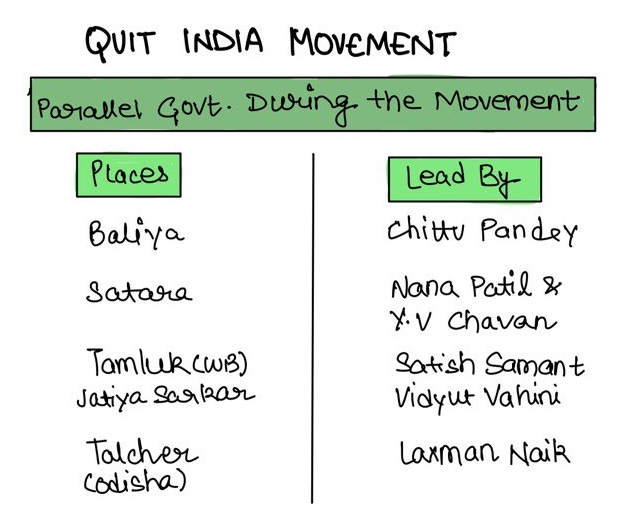What were the events that led to the Quit India Movement? Point out its results
What were the events that led to the Quit India Movement? Point out its results
Subject: Modern History
The Quit India Movement of 1942 emerged as a watershed moment in India's freedom struggle, sparked by multiple national and international developments. The immediate trigger was the failure of the Cripps Mission and growing discontent against British colonial rule during World War II.
Events Leading to the Quit India Movement
-
Impact of World War II:
- Japan's rapid advance towards Indian borders after the Fall of Singapore in 1942 created panic.
- The British retreat from Burma and their inability to protect Indian interests raised serious concerns.
- Rising inflation and food shortages due to war efforts caused widespread public dissatisfaction.
-
Failure of Previous Negotiations:
- The collapse of Cripps Mission (March 1942) which offered only a promise of dominion status after the war.
- Congress leaders' disillusionment with British promises after the August Offer of 1940.
- Breakdown of Gandhi-Linlithgow talks further strained Indo-British relations.
-
Political Developments:
- The Lahore Resolution of 1940 demanding separate Muslim state complicated national unity.
- The All India Congress Committee meeting at Bombay (August 8, 1942) passed the historic "Quit India Resolution".
- Gandhi's famous "Do or Die" call mobilized masses for final struggle.
Results of the Quit India Movement
-
Immediate Impact:
- Unprecedented mass participation including students, workers, peasants, and government officials.
- Formation of parallel governments in Satara (Maharashtra), Tamluk (Bengal), and Ballia (UP).
- Brutal British suppression with over 100,000 arrests and use of military force.
-
Long-term Consequences:
- Demonstrated Indian masses' capacity for self-rule and resistance.
- Weakened British control over the colonial administration.
- Strengthened the Indian National Army under Subhas Chandra Bose.
- Led to greater unity among different sections of society.
The Quit India Movement marked the beginning of the final phase of India's independence struggle. The movement's spirit of "Do or Die" continues to inspire struggles for justice and freedom across the globe.
Answer Length
Model answers may exceed the word limit for better clarity and depth. Use them as a guide, but always frame your final answer within the exam’s prescribed limit.
In just 60 sec
Evaluate your handwritten answer
- Get detailed feedback
- Model Answer after evaluation
Model Answers by Subject
Crack UPSC with your
Personal AI Mentor
An AI-powered ecosystem to learn, practice, and evaluate with discipline

